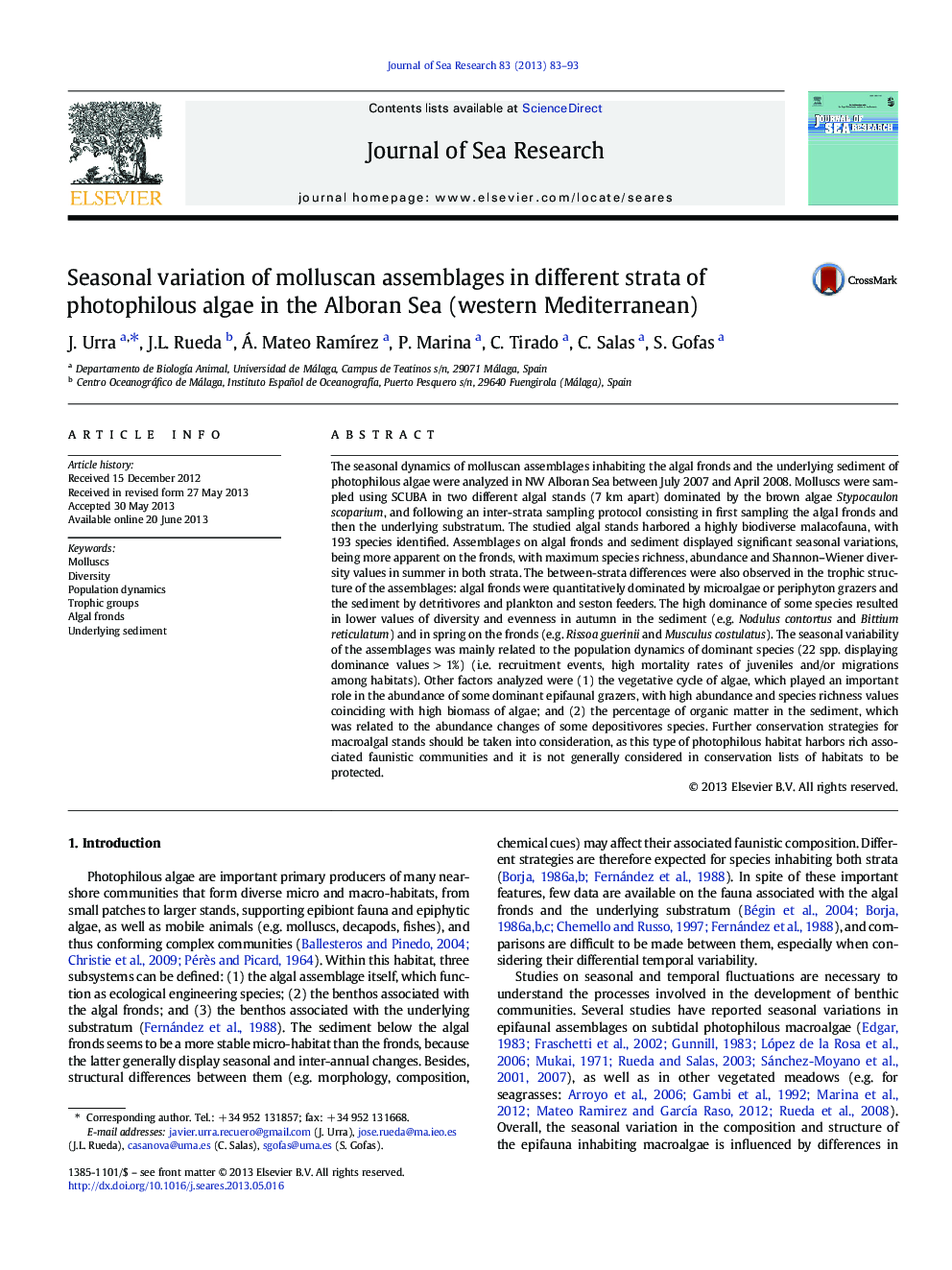| کد مقاله | کد نشریه | سال انتشار | مقاله انگلیسی | نسخه تمام متن |
|---|---|---|---|---|
| 6387470 | 1627491 | 2013 | 11 صفحه PDF | دانلود رایگان |
- Seasonal changes of molluscs from photophilous algae were studied in the Alboran Sea.
- The algal fronds and the underlying sediment were studied separately.
- Both assemblages displayed significant seasonal changes.
- Population dynamics of the species influenced the seasonality of ecological indexes.
- Macroalgal biomass and temperature are linked to the seasonal changes of fauna.
The seasonal dynamics of molluscan assemblages inhabiting the algal fronds and the underlying sediment of photophilous algae were analyzed in NW Alboran Sea between July 2007 and April 2008. Molluscs were sampled using SCUBA in two different algal stands (7 km apart) dominated by the brown algae Stypocaulon scoparium, and following an inter-strata sampling protocol consisting in first sampling the algal fronds and then the underlying substratum. The studied algal stands harbored a highly biodiverse malacofauna, with 193 species identified. Assemblages on algal fronds and sediment displayed significant seasonal variations, being more apparent on the fronds, with maximum species richness, abundance and Shannon-Wiener diversity values in summer in both strata. The between-strata differences were also observed in the trophic structure of the assemblages: algal fronds were quantitatively dominated by microalgae or periphyton grazers and the sediment by detritivores and plankton and seston feeders. The high dominance of some species resulted in lower values of diversity and evenness in autumn in the sediment (e.g. Nodulus contortus and Bittium reticulatum) and in spring on the fronds (e.g. Rissoa guerinii and Musculus costulatus). The seasonal variability of the assemblages was mainly related to the population dynamics of dominant species (22 spp. displaying dominance values > 1%) (i.e. recruitment events, high mortality rates of juveniles and/or migrations among habitats). Other factors analyzed were (1) the vegetative cycle of algae, which played an important role in the abundance of some dominant epifaunal grazers, with high abundance and species richness values coinciding with high biomass of algae; and (2) the percentage of organic matter in the sediment, which was related to the abundance changes of some depositivores species. Further conservation strategies for macroalgal stands should be taken into consideration, as this type of photophilous habitat harbors rich associated faunistic communities and it is not generally considered in conservation lists of habitats to be protected.
Journal: Journal of Sea Research - Volume 83, October 2013, Pages 83-93
